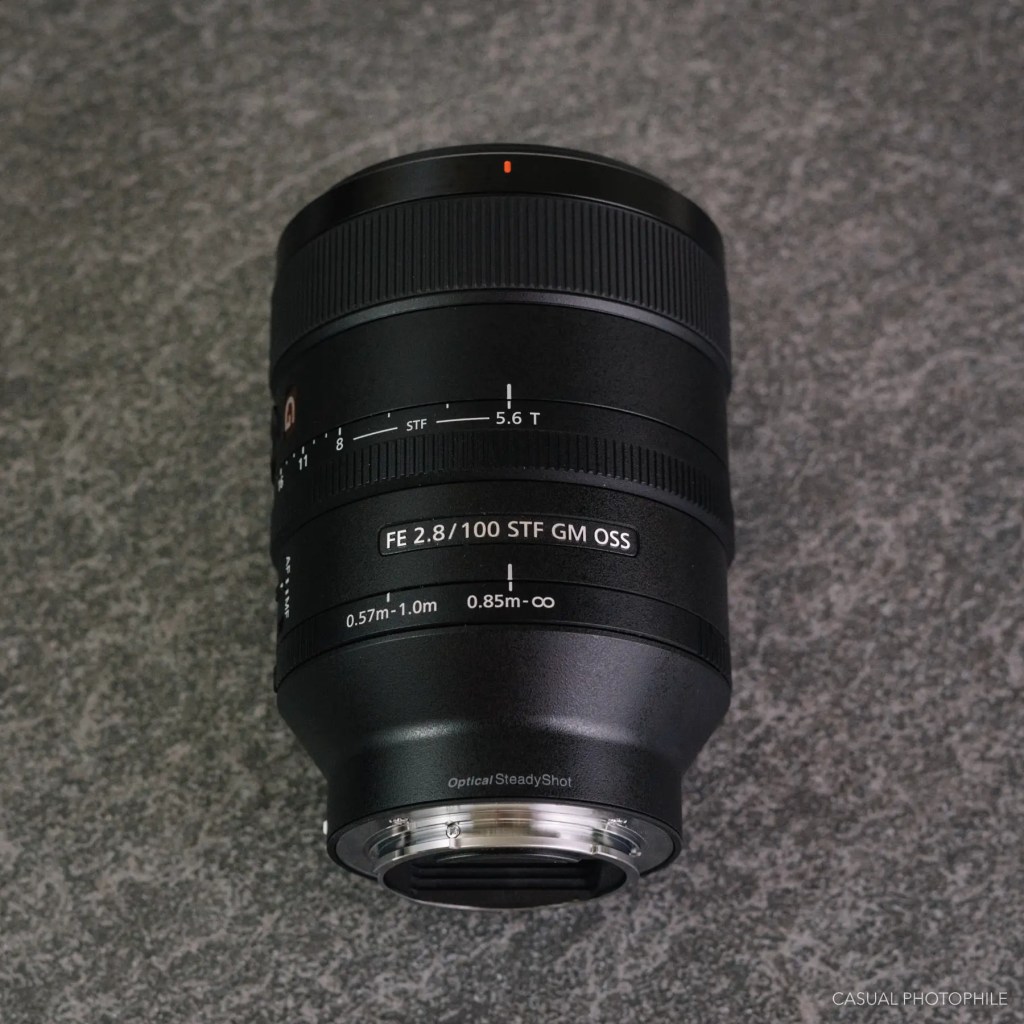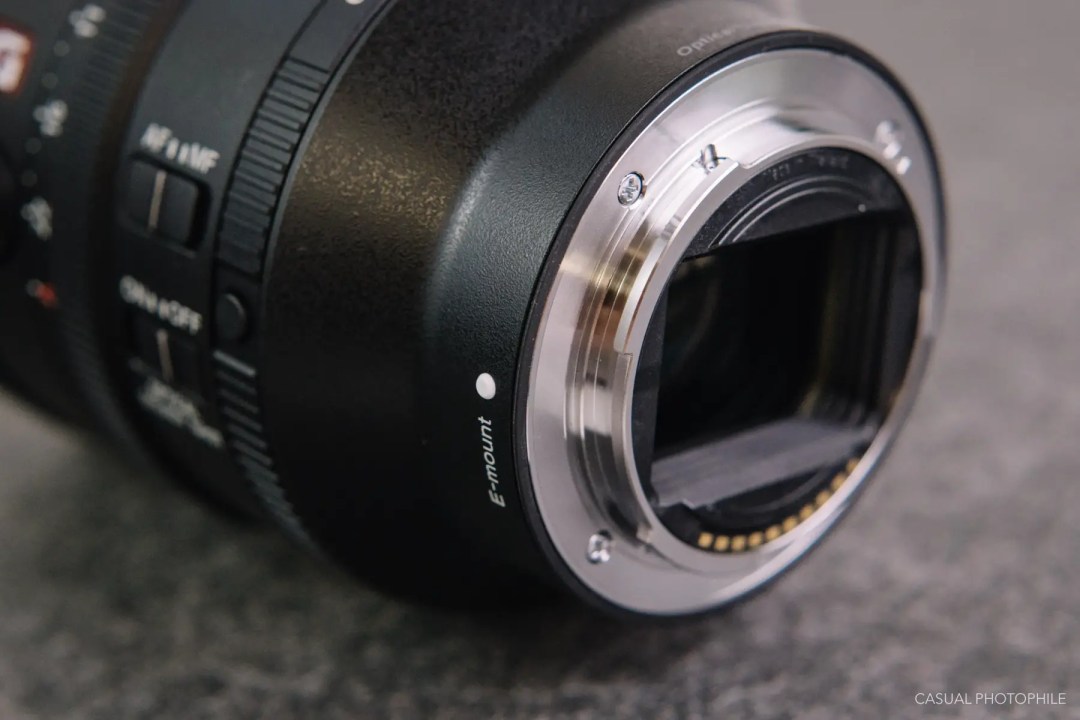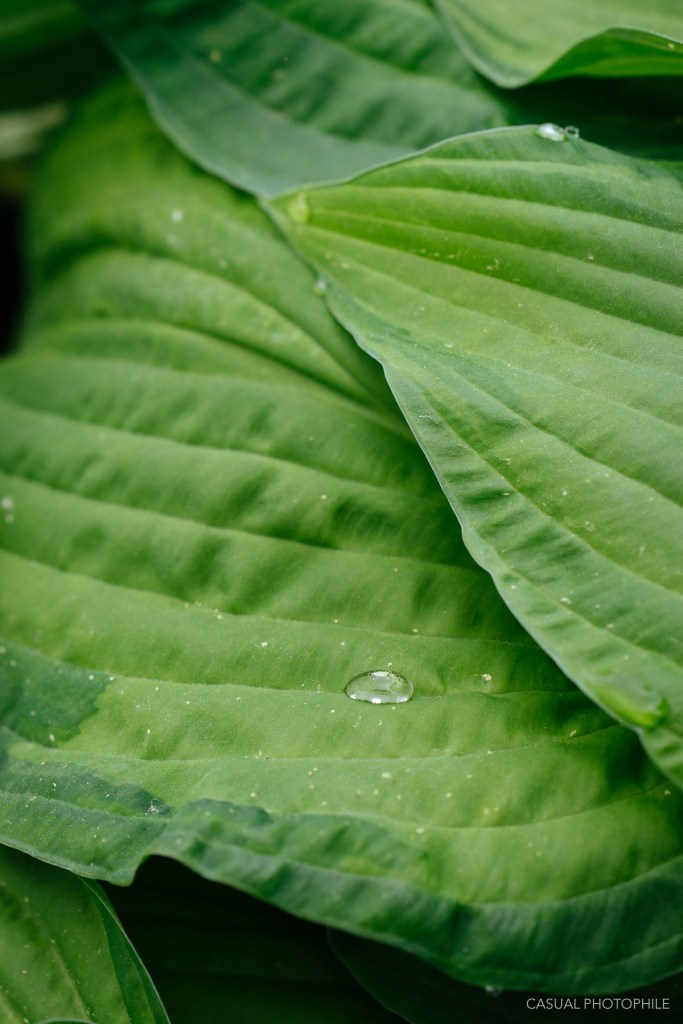I love interesting lenses, and for the past month I’ve been shooting one of the most interesting lenses being manufactured today – the Sony FE 100mm F/2.8 STF GM OSS. This short telephoto lens is rare in that it has an apodization filter, enabling it to create exceptional bokeh (smooth out-of-focus areas of an image) while also realizing perfectly sharp in-focus elements. It’s a stunning portrait lens, and it has proven to be surprisingly versatile, too.
Before we get too far, let’s quickly digest the alphabet soup of that lens name. The numerous acronyms tell us that it’s a full frame Sony E mount lens (FE) in the brand’s premium G Master range (GM), and that it’s got Optical Steady Shot image stabilization (OSS). Okay, but the most important acronym of all is STF, which stands for “Smooth Trans Focus.” And it is this feature alone which sets the Sony FE 100mm F/2.8 STF GM OSS apart from almost every other lens.

What is a Smooth Trans Focus (STF) Lens?
A Smooth Trans Focus lens is a type of lens which uses an apodization (APO) filter to create exceptionally smooth bokeh (rounded out-of-focus elements) in both the foreground and background of a photograph. The apodization filter is a neutral-grey tinted lens element positioned internally, near to the lens diaphragm. The tint is graduated in such a way that it’s clear in the center and becomes darker toward the edges of the element. This is the magic glass that blurs the bokeh.
The easiest way for us to demonstrate the APO filter’s effect is with highlight bokeh, or out of focus points of light. Where normal lenses will render out of focus points of light as circles or ellipticals with clearly defined edges (commonly called bokeh balls), the STF lens renders these as perfectly round blurry blobs with less defined edges. The same effect is applied to all out of focus elements of a shot, not just bright light sources of course, but seeing the way that the APO filter renders these hard points of light is instructive. It allows us to visualize just how well this lens and its apodization filter blurs all of the blurry bits compared with normal lenses.


STF technology was originally invented and patented by Minolta in the 1980s, but was not made available in a photographic consumer lens until 1999 when the brand released the Minolta 135mm F/2.8 STF lens for their Alpha SLR/DSLR mount. When Sony acquired Minolta and their patents in 2006, the 135mm STF continued to be produced and sold under the new Sony name. In 2017, Sony released the lens which we’re discussing today, the inarguably better Sony FE 100mm F/2.8 STF GM OSS for their E Mount digital mirrorless system cameras.
The genius of the STF lens is that it not only enhances the blur of the out-of-focus areas of an image, but it also renders a perfectly sharp image on the point of focus. This perfectly sharp plane of focus differentiates STF lenses from soft focus lenses, like the $7,195 Leica Thambar-M 90mm F/2.2, which blur the entire image. Additionally, the STF lens’ ability to enhance the blur of both the foreground and background at the same time differentiates the STF lens from so-called defocus control lenses, like the Nikon 135mm F/2 DC lens, which can only enhance the blur of either the foreground or the background, but not both at once.
And that’s the real selling point of the STF lens. It’s not so much the bokeh alone, though the bokeh really is unbelievably refined. And it’s not just the sharpness of the in-focus elements, though they are quite literally the sharpest of any lens I’ve ever used. It’s the perfect juxtaposition of the two qualities. The STF lens excels over other lenses because it provides exceptional bokeh without sacrificing sharpness in the in-focus elements of the shot. There is, in fact, no lens which produces such an incredible combination of in-focus sharpness and out-of-focus blur. There just isn’t.
Quick Specifications
Let’s quickly get through some technical details, and then we can move on to the fun stuff. Being part of the G Master series of Sony E Mount lenses, I expect top shelf specs. The 100mm STF doesn’t disappoint. This lens has everything one could want in a pro-spec lens today. Here’s the list –
-
- Native Format – Sony E Mount full frame
- Focal Length – 100mm (150mm on APS-C cameras)
- Optical Formula – 13 elements in 10 groups (excluding apodization element); 1 aspherical lens element; ED glass; Nano AR coating
- Angle of View – 23º (full frame) 16º (APS-C)
- Maximum Aperture – F/2.8 (T/5.6)
- Minimum Aperture – F/20 (T/22)
- Aperture Blades and Shape – 11, circular
- Aperture Control – Yes, aperture ring with click stops and de-click switch
- Focus Modes – Automatic (Direct Drive SSM); manual (electronic) with focusing ring; focus position control for close ups, and mid-to-infinity; focus hold button
- Minimum Focus Distance – 2.79 ft/0.85 m (at “0.85 m–∞” position); 1.87 ft/0.57 m (at “0.57 m–1.0 m” position)
- Maximum Magnification Ratio – 0.14 (at “0.85 m–∞” position); 0.25 (at “0.57 m–1.0 m” position)
- Weather and Dust Resistance – Yes
- Filter Diameter – 72mm
- Hood Type – Round, Bayonet
- Size (Diameter x Length) – 3 3/8 x 4 3/4″ (85.2 x 118.1 mm)
- Weight – 24.7 oz (700 grams)


The F-stop and the T-stop
The lens’ maximum f-stop is F/2.8, but its maximum t-stop is F/5.6. There’s some confusion around what this means, but it’s pretty easy to understand. Here are two quick definitions to get us started.
An f-stop (or f-number) is the ratio of a lens’ focal length to the dimension of its entrance pupil. It is a dimensionless number used to express lens speed in photography. Even if you or I don’t necessarily understand the math behind f-numbers, most of us geeky photographers at least understand, generally, the difference between F/1.8 and F/8 on our lenses and how these numbers impact depth-of-field and light transmission. Assuming we understand f-numbers, t-numbers are fairly easy to understand, too. A t-number is an f-number adjusted to account for light transmission. So if we remember that the apodization filter inside an STF lens is essentially a tinted piece of glass, it’s easy to understand why the light transmitted at the lens’ f-number of F/2.8 might be equivalent to a t-number of T/5.6.
What’s happening is that we’re losing some light as it passes through the apodization filter. So shooting wide open at the lens’ maximum f-stop of F/2.8 correlates to a t-stop of F/5.6, and this progresses in a curve as the aperture is closed with the f-numbers and t-numbers eventually converging to the same value. Since the apodization filter in the lens is graduated, with the neutral-grey tint diminishing to clear glass toward the center of the element, by F/8 the f-number and t-number values eventually match. From F/8 and smaller, f-stops match the t-stops.
One important note – the f-numbers and t-numbers are connected of course, but not in the way that some people say. It’s not right to say that the Sony FE 100mm F/2.8 STF GM OSS isn’t an F/2.8 lens, or that its maximum aperture is really F/5.6, because that’s the t-number and only refers to light transmission, not depth-of-field. A simple way to think of it is that the lens, when shot wide open, has the depth-of-field of an F/2.8 lens but the light collecting ability of an F/5.6 lens. While some reviewers have cited this as the lens’ Achilles heel, I just don’t see it. We’ll get into this in-depth later on, but the quick and easy note – the lens gathers plenty of light.


Practical Use and Ergonomics
The lens is substantial in both size and weight, with an enormous and beautiful front element. The barrel is made of metal, as is the mount. The filter threads and rotating rings (aperture, focus control, focus ring) are made of plastic, with the focus ring lined with a beautifully knurled rubber grip. There’s a weather seal at the mount, and the lens is generally dust and splash proof. It’s luxuriously built and meticulously finished. If you like lenses, you’ll love this lens.
Practical use is effortless. In automatic focus and automatic shooting modes, it’s a point and shoot lens. When we switch to manual controls, things are almost as simple. Aperture can be controlled via the camera body, or via the dedicated aperture ring (this electronically controls the aperture inside). There’s a click control switch on the underside of the lens which allows us to de-click the aperture ring for a fluid rotation.
The manual focus ring is positioned near the front of the lens, and is light and easily rotated with a single finger. Focus is electronic, just like the aperture, fast and responsive. The focus lock button is positioned on the left hand side of the lens, perfectly placed under the thumb when the camera and lens are held in the customary shooting position. Also on the left side of the lens is the Optical Steady Shot image stabilization switch, and a manual focus/automatic focus switch. The focus distance selector ring is positioned near the lens mount. This ring moves the lens elements inside the body to allow close focusing from 0.57 to 1.0 meters.



Image Quality, Shooting, and Sample Shots
Arguably the only section of this lens review that matters, image quality from the Sony FE 100mm F/2.8 STF GM OSS is simply astounding. I’m not sure I’ve ever used a better lens, all things considered. MTF charts are boring, but they are instructive. The Sony MTF chart on this lens is damn near perfect. What more can I say? Just look at the photos.
If you’re interested in a short tele lens for general use, or in a dedicated portrait lens, or you just want perfect sharpness at the plane of focus and unbeatable bokeh everywhere else, this is the only lens you need for Sony E mount. Some people will say that “Lens X or Y makes bokeh that’s just as good.” and in some cases that’s true. But they’re missing the big picture. Other lenses might make equally pleasant bokeh shot wide open, but no other lens makes bokeh like this combined with such perfect sharpness at the plane of focus. And no normal lens can make bokeh this beautiful when stopped down one, two, or even three stops. The blur that this lens can make shot at F/8 is better than some standard F/1.4 prime lenses I’ve used when shot wide open!
There are virtually no optical anomalies to speak of. There’s no distortion that anyone would ever notice. There’s no vignetting. There’s no chromatic aberration (though there is a tiny bit of bokeh color fringing which almost nobody will ever notice). Flaring and ghosting is controlled better than any other lens I’ve used (though there are tiny, tiny flares when we point that big honkin’ lens element directly at the sun).
Shot wide open, we’re naturally seeing the lens’ best bokeh. Again, naturally, bokeh is best presented when we’re shooting subjects which are close. Different from most other lenses, even when we stop down the aperture we’re able to create exceptional bokeh. This is the benefit of the apodization filter. Even at F/8 I can make bokeh blur. That’s just not possible with normal lenses.
Sharpness is exceptional at any aperture, as mentioned many times already. When focusing on distant subjects, the entire field is sharp and contrasty. There’s excellent subject isolation as well, with a beautiful gradation between the point of focus and blurrier bits.



The relatively meager light transmission when shot wide open is often cited as a limiting factor compared with faster, non-STF prime lenses. While it’s obviously true that an F/1.8 will transmit more light wide open, I’m not sure it matters as much as people tend to say. I almost feel like this is an area where reviewers are looking to balance their praise of the lens against a drawback. And sure, I guess it’s a drawback theoretically. But in my time with the lens, the relatively slow maximum t-number didn’t impact my photos at all. Not once did my camera top out its ISO, or even come close. Not once did the shutter speed become so slow that my images suffered from camera shake (remember that we’ve got Optical Image Stabilization within the lens, and that with the newer Sony mirrorless cameras we’ve also got in-body stabilization helping to keep things steady). Yeah, T/5.6 is less bright than F/2.8, but I’m just not seeing that it matters. This lens isn’t typically going to be used in low-light situations, and even when I did so for testing purposes, my camera handled it.
The AF system is silent and responsive, with no external moving parts. Some articles that I’ve read on this lens have called the AF slow. I don’t see it. I’ve been able to instantly focus on whatever I need to focus on, without any fuss. Flying birds, flying bees, kids that won’t stop running, nearly transparent bubbles floating on the breeze; Sony’s DDSSM does the job well (in conjunction with my old workhorse A7II).
What’s been most surprising about this lens isn’t how effortless it is to make incredible looking pictures, though it is effortless. The big surprise is just how versatile it is. The 100mm focal length isn’t what I’d call a “go-to focal length” for me. But in my time with this lens I’ve shot portraits of my kids, macro photos that I’ve not been able to make with any other lens, shots of bees in flight, shots of helicopters and planes in flight, headshots, full body portraits, shots of my motorcycle, landscapes. It’s astounding how many uses I’ve found for the lens, and how excellent it’s been at such a variety of image styles. I could easily see this lens being packed into my everyday camera bag, alongside a 50mm and a wide angle. This trio would cover all of my needs, and I’d be hard-pressed to find a better short tele lens in any system.



Comparison with Other Lenses
In the world of lenses at large there are few competitors to the STF lens. Within the Sony mirrorless system, there’s even less competition. The apodization filter of the Sony FE 100mm F/2.8 STF GM OSS sees to that. Of course there’s the original STF lens, the 135mm that was originally made by Minolta for their A mount. This 135mm STF lens is still available for what’s now known as Sony’s A mount, but this lens has fewer lens elements and performs worse on MTF charts compared with the 100mm. It has fewer aperture blades, and is manual focus only. That lens is 18 years older than the modern 100mm STF. I don’t see any reason to shoot the older lens over the new one.
Outside of Sony’s systems, there’s the Fuji 56mm F/1.2 APD, which is an STF lens for Fuji’s X-series crop-sensor mirrorless cameras. This lens, by all accounts, makes beautiful bokeh. I haven’t yet used it. There’s the Chinese-made Venus Optics Laowa 105mm F/2 STF. This lens is available for Nikon F, Pentax K, Canon EF, Sony E, and Sony A mount, and costs one third to one half the price of the Sony STF (depending on mount). But it’s a manual focus only lens, with no electronic control, with worse build quality. Optical performance in all metrics is inferior. For many users the Laowa lens will work just fine. If the cost benefit is most important, this may be a good choice.
Final Thoughts
For me, there’s no better short tele lens than the Sony FE 100mm F/2.8 STF GM OSS. And this surprised me. I expected to like the lens, write a review about a one-trick pony that makes blurry bokeh, and return it to my friends at B&H Photo. I didn’t expect to find a lens that’s helped me make some of my favorite photos that I’ve made all year. It’s been a breath of fresh air, and a fun marvel of optical engineering to get lost with.
At $1,495, it’s not a cheap lens. But make no mistake – this is a world-class optic for professionals and enthusiastic amateurs. It’s a lens that will allow us to make world-class photos if we have enough talent and vision and time to practice. Even if we’re not going to make exclusive use of the STF tech, it’s still one of the best lenses we can buy in the short telephoto segment.
Buy your own Sony FE 100mm F/2.8 STF lens from B&H Photo
Follow Casual Photophile on Facebook and Instagram
[Some of the links in this article will direct users to our affiliates at B&H Photo, Amazon, and eBay. By purchasing anything using these links, Casual Photophile may receive a small commission at no additional charge to you. This helps Casual Photophile produce the content we produce. Many thanks for your support.]






























Bravo James ! Great review.
Pefect lens for Sony A7, A9 line. Price is correct according to the quality. If we want a Zeiss or a Leica equivalent, how much it will be?
Your pictures are fantastic, the kids pictures are marvelous : so sharp and especially so natural.
BRAVO ! Thank you so much for the quality of your review. Maybe one day I will buy, but so many bodies and lens in my special room, so now I have decided tos top and use what I have …
Thank you again and BRAVO